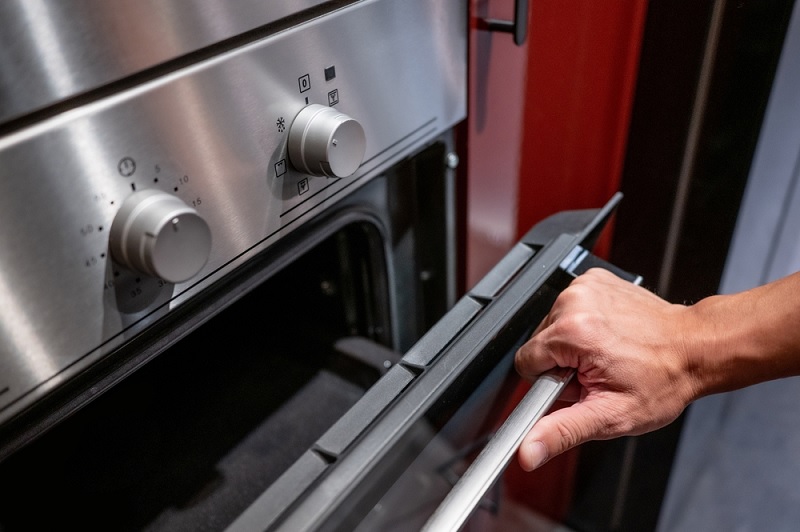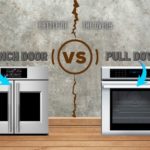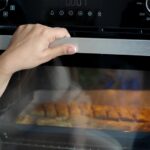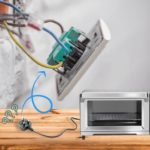A reliable oven sits at the heart of every kitchen. Modern multifunction ovens come with various settings and functions designed to make our lives easier—from self-cleaning functions to settings that use heat from the base of the oven, the top of the oven, or a combination of both.
If you don’t know the meaning of the oven symbols, the variety of settings can hinder rather than help.
With so many options, choosing the right setting for your recipe can be overwhelming!
To help you out, here we delve deep into the intriguing world of oven symbols. We explore their meanings and functionalities to equip you with the knowledge needed to master the use of your oven.
Oven Symbols
1. Conventional oven

All multifunctional ovens will have a conventional cooking symbol. This oven symbol is typically represented by a simple square or rectangle.
This symbol often has a line at the bottom and the top, indicating that the heat is generated by the heating elements at the top and bottom of the oven without using a fan.
Use this setting for: Baking goods at low and slow temperatures (such as cakes or bread) or recipes that specifically call for conventional cooking.
2. Fan oven

The symbol for a fan oven, also known as a convection oven, typically looks like a fan icon. When using this setting, the fan will turn on and circulate hot air throughout the oven cavity.
This circulating hot air helps to cook food more evenly and faster compared to a conventional oven so that you can cook at lower oven temperatures.
Use this setting for: Cooking meals that need a good distribution of heat (such as meats, casseroles, or roasts), multiple-tray cooking, and high-temperature recipes.
3. Bottom heat only

The symbol for using the bottom heating element is commonly represented by a symbol that looks like a horizontal line at the bottom of a square or rectangle. This symbol indicates that only the bottom heating element will be active while the oven is turned on.
Use this setting for: Browning the bottom of dishes or crisping the crust of baked goods without browning the top too much.
4. Fan with lower heat

The oven symbol for a fan with the lower heating element is represented by a fan icon with a horizontal line below it. This indicates that the fan is in use, and heat is coming from the bottom heating element.
Use this setting for: Baking recipes or dishes that require a crispy base, such as pizzas. It can also be used for crisping the bottom of pies and cooking quiches that haven’t been blind-baked.
5. Fan oven with grill

The symbol for a fan oven with a grill – also known as a “fan grill” or “fan-assisted grill” – is represented by a symbol that combines the fan icon with a grill symbol.
It is depicted as a fan with horizontal lines or zigzag lines above it to indicate that both the fan and the grill element are in use. When this setting is on, the oven is hottest at the top.
Use this setting for: Finishing off oven-baking dishes that need a crispy top, such as lasagna, gratin potatoes, and macaroni cheese.
Grill Symbols
1. Full grill

The full grill symbol on an oven represents the use of the grill element (also known as the broiler element) at its highest intensity.
This oven symbol often resembles two wavy or zigzag lines, which signifies the powerful radiant heat from the grill element at the top of the oven.
Use this setting for: Browning the top surface of dishes, melting cheese, or achieving a crispy texture. It’s often used for dishes like fish fillets, open-faced sandwiches, and gratin dishes.
2. Part grill

The part grill oven symbol indicates that only a portion of the grill is being activated. This allows for controlled and gentle grilling of specific areas of the food, rather than grilling the entire surface.
The oven symbol for part grilling looks similar to the full grill symbol, only with a single zigzag line rather than two lines to represent its partial activation.
Use this setting for: Grilling smaller amounts of food that don’t take up much space. Make sure you position the food directly under the hot area of the grill.
3. Bottom heat with grill

The symbol for an oven setting that combines bottom heat with the grill is represented by a combination of the grill and bottom oven symbols. You’ll usually see a zigzag or wavy line along with a horizontal line below it.
Use this setting for: Cooking dishes where you want to apply heat from both the top and bottom, such as for browning the top and cooking the bottom of casseroles or gratins.
What Other Oven Symbols Are There?
1. Oven light

A small lamp or lightbulb icon typically represents the symbol for the oven light. This oven symbol is used to indicate the control for turning the oven light on or off.
Usually, turning the knob or pressing the button associated with this symbol will control the oven light.
Use this setting for: Checking the progress of your cooking or baking without having to open the oven door. This helps keep the oven at an accurate temperature for better-cooked dishes.
2. Defrost

Not all ovens have a dedicated defrosting function. When a defrosting function is available, it is typically represented by a snowflake or frost symbol.
This symbol indicates that the oven can gently warm up to a low temperature suitable for defrosting frozen foods without cooking them.
Use this setting for: Reducing the defrosting time of frozen food—the time can be reduced by 50% compared to the defrosting time on your kitchen counter.
3. Plate warming
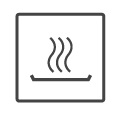
The plate warming function in an oven is typically indicated by a plate or dish symbol with wavy lines that represent steam rising from it.
This symbol signifies the plate warming feature, which is designed to gently warm plates, dishes, or serving platters.
Use this setting for: Ensuring that your dishes are warm when serving hot food, which can help maintain the temperature and tastiness of your meal.
4. Pyrolytic cleaning

If you have a self-cleaning oven, it will have a pyrolytic cleaning function. The oven symbol for this can vary depending on the make and model of your oven, but it is typically represented by either:
- The letter “P” (standing for pyrolytic cleaning); OR
- A 3 x 3 row of circles that are smaller at the bottom and get larger towards the top.
This symbol indicates the pyrolytic cleaning function, which is a self-cleaning mode that uses high heat to incinerate food residue and grease inside the oven. During a pyrolytic cleaning cycle, the oven’s temperature is raised to around 500°C.
Use this setting for: Eliminating the need for manual scrubbing or cleaning with chemical cleaners and removing burnt-on residue, grease, and grime.
5. Minute minder
The minute minder setting (or timer function) often resembles an hourglass or a clock icon. The button or dial marked with this symbol will allow you to set a specified cooking time for your dishes.
After the time has passed, the oven will emit an audible alarm or beep to alert you that your food is ready or that a cooking step is complete.
Use this setting for: Accurately tracking your cooking and baking times and reminding yourself that you need to check on your food.
6. Oven alarm
A bell or alarm clock icon normally represents the symbol for an oven alarm. It is often shown on the oven display panel along with an audible beeping or alarm sound to inform you that your timer has elapsed.
It lets you know that your food is ready to be taken out of the oven or that it’s time for your next recipe step.
Use this setting for: Setting an audible noise to alert you when your food is ready, perfect for when you’re out of the kitchen while your food is cooking.
7. Child lock

The child lock symbol on an oven is typically represented by a padlock icon. It indicates that the oven has a child lock or safety lock feature, which can be activated to prevent children from opening the oven.
Once activated, the child lock will typically require a specific combination of button presses or actions to unlock the oven and make it operational again.
Use this setting for: Preventing unintentional oven use, especially in households with young children. It helps ensure that the oven can only be operated by those who know how to unlock it.

Hannah is a freelance content writer and self-proclaimed foodie. When Hannah isn’t sitting tapping at her laptop, you’ll probably find her in the kitchen. As an ex-chalet host, she’s used to cooking four-course meals for 10+ people and loves feeding friends and family whenever possible.

